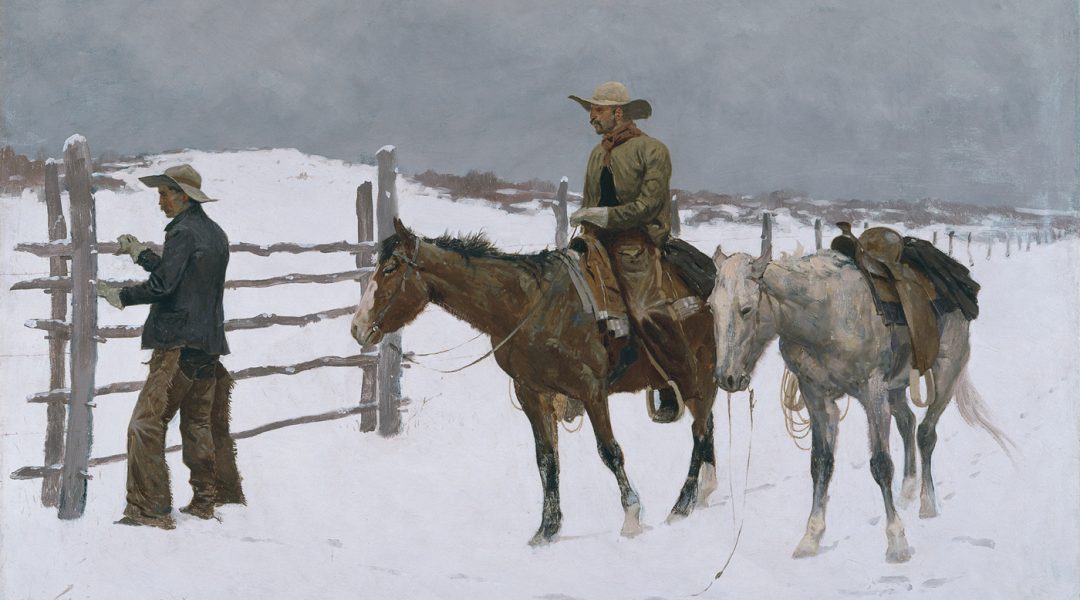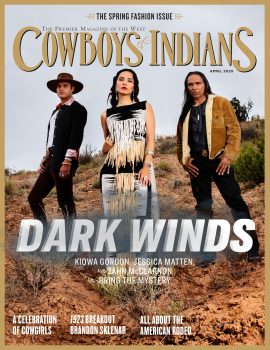Thirty years ago, Larry McMurtry won the Pulitzer Prize for fiction for Lonesome Dove. We talk with the director of the Sid Richardson Museum about celebrating the milestone with an exhibition of fine art depicting the West.
Cowboys & Indians: You curated the exhibition Lonesome Dove: The Art of Story — on view January 15 through June 19 — as part of a months-long celebration in Fort Worth, Texas, called Lonesome Dove Reunion and Trail. How does art figure in to the mix?
Mary Burke, Director, Sid Richardson Museum: Lonesome Dove: The Art of Story seems a perfect fit for Fort Worth, a city whose motto is “Cowboys and Culture”! When considering our participation regarding mounting an exhibition that included production materials from the Lonesome Dove Collection, we were struck by the parallel aspects in creating a narrative, whether it be via well-crafted words in a screenplay, or well-crafted set illustrations, costume designs, storyboards, props, or, as in the Sid Richardson Museum’s case, application of paint on canvas. Each vehicle addresses such storytelling elements as character(s) setting(s), action, and point of view. Regardless of the vehicle, the author/craftsperson/artist is dedicated to creating convincing and memorable characters and a sense of place in time.
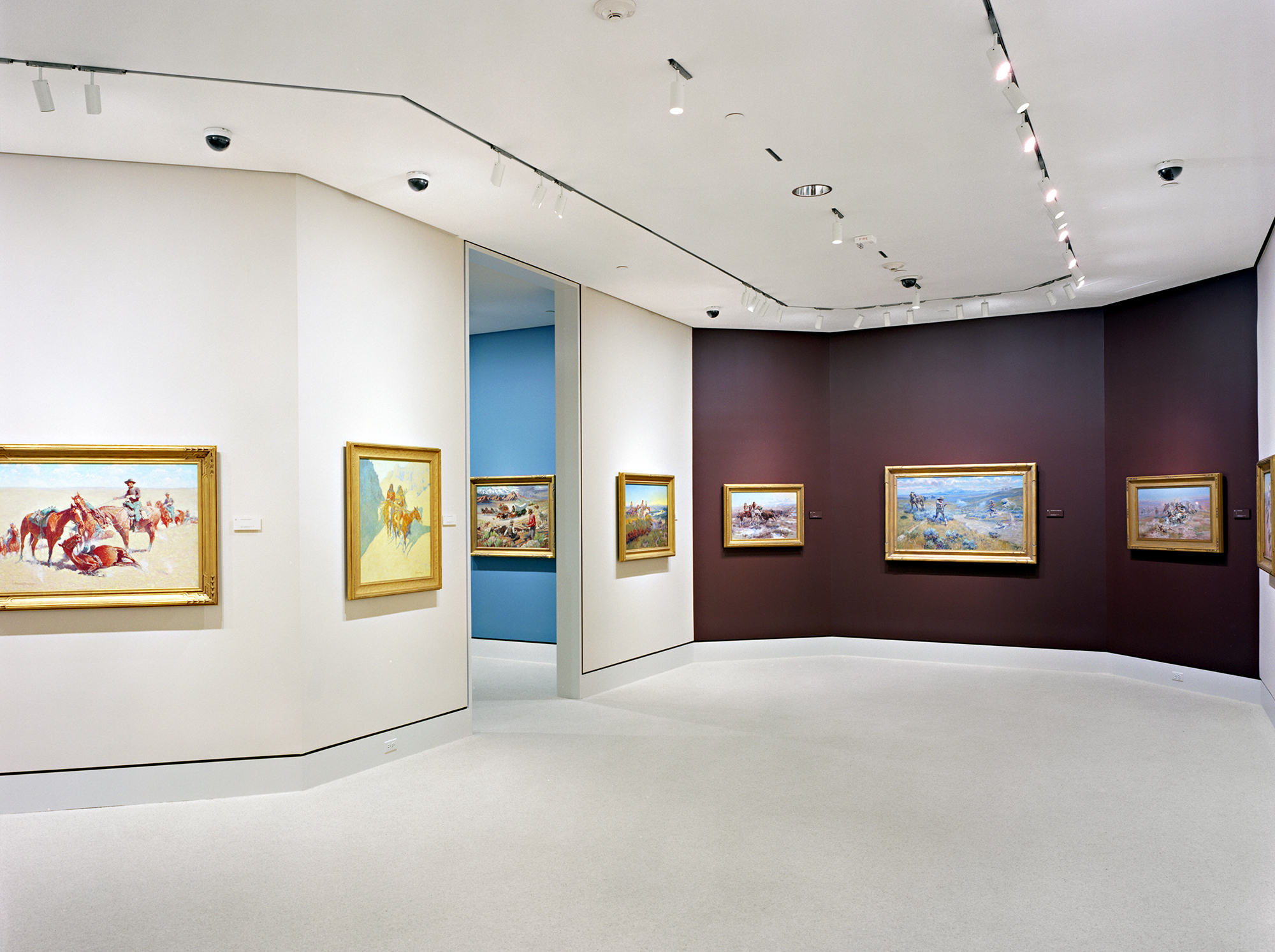
C&I: What’s going on thematically in the exhibition?
Burke: Lonesome Dove’s author Larry McMurtry once stated that his books on the West were a “criticism, celebration, and lament for an era and its passing.” This celebration and lamentation of the West that has passed is the tie that binds the works in this exhibition, in words, set illustrations, props, costume designs, and storyboards, or depicted in the paintings and sculptures by artists Frederic Remington and Charles Russell. Remington and Russell painted with a sense of nostalgia for a West that was then passing or had already passed.
This first-of-its-kind exhibition includes Lonesome Dove miniseries production materials that allow a behind-the-scenes look at the crafting of setting, action, and the characterizations of Gus and Call, and iconic Remington and Russell works. The Remington and Russell works were selected to reference the Lonesome Dove story. So, for example, as there is a stampede scene in the novel and book, there is the iconic Remington painting The Stampede, on loan from the Gilcrease Museum.
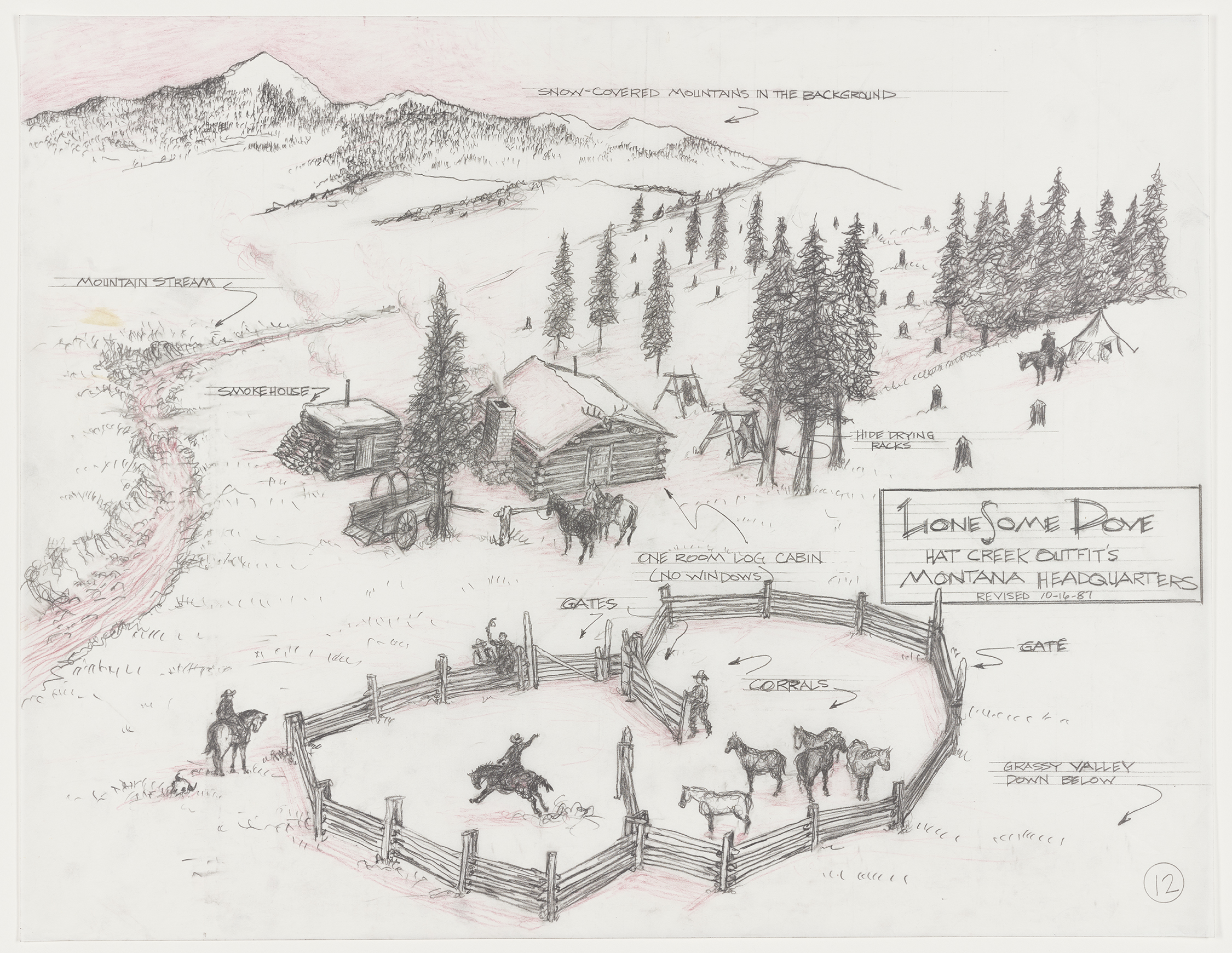
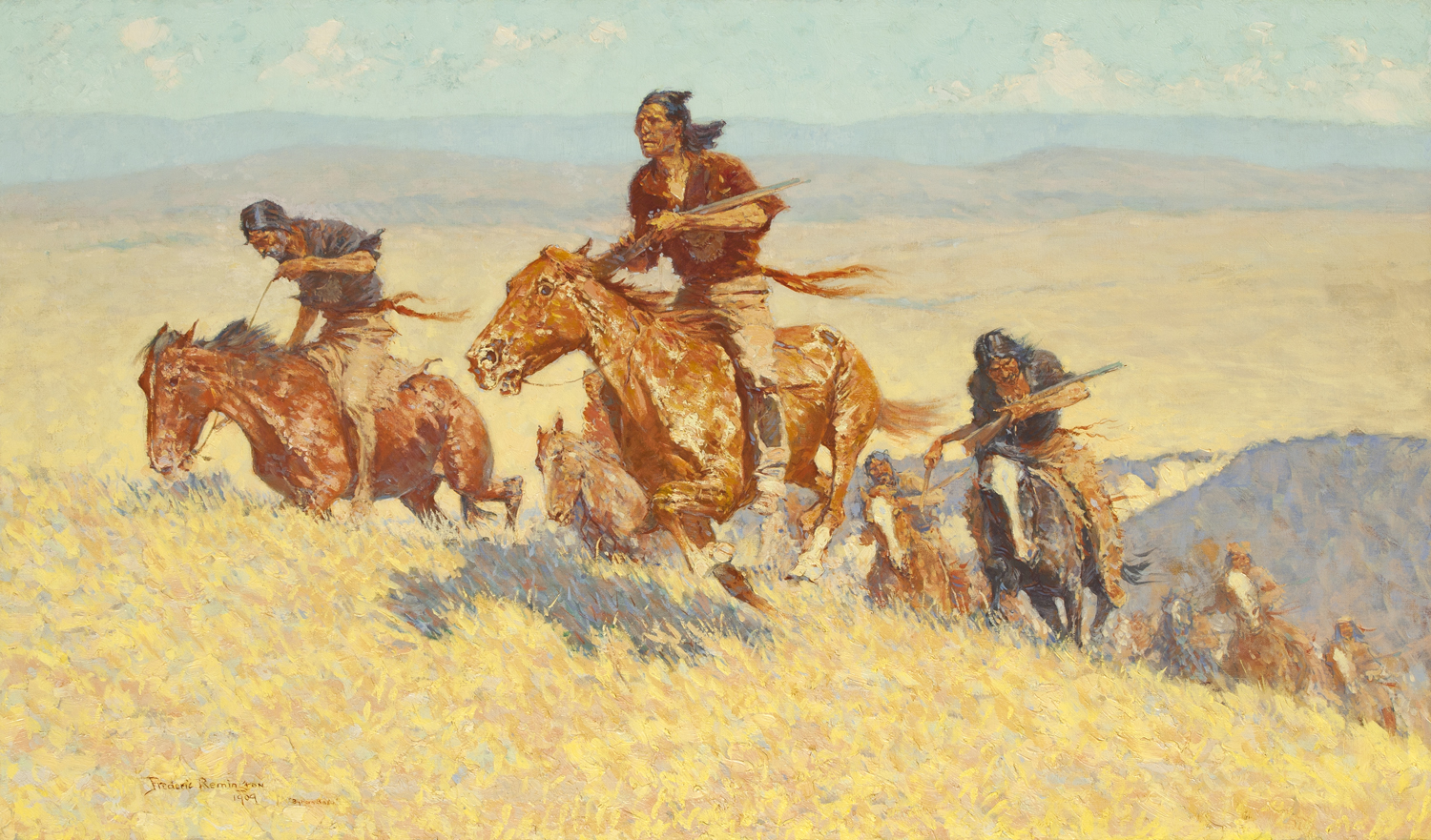
C&I: Describe several additional standouts in the exhibition.
Burke: From an artistic standpoint, the paintings of Remington are standouts in this exhibition. Peter H. Hassrick, director emeritus and senior scholar [of the] Buffalo Bill Center of the West and preeminent Remington scholar (having written the catalogue raisonné of Remington), has reflected on the gathering of Remington masterworks assembled for our exhibition in this way:
“It is a special moment indeed when a set of true Frederic Remington masterworks from four major art museums is assembled in one place. Six paintings, all stemming from the artist’s mature period (1895 – 1909), have been gathered by the Sid Richardson Museum to convey a sense of Remington’s historically perceptive and artistically sophisticated insights into the closing epoch of the Western frontier.
“The selection of these works reveals Remington’s changing pictorial style, from the Beaux Arts clarity of figuration in his 1895 oil The Fall of the Cowboy, to his astonishingly evocative nocturnal visions in The Stampede and the vital impressionist techniques brought to bear in his Buffalo Runners – Big Horn Basin. These works also reflect Remington’s observations of a passing world. The Fall of the Cowboy is a summative record of the closing open range cattle business and the denouement of its hero, the cowboy. The same message pervades The Stampede, with its dramatic race for life against multiple odds. Fight for the Waterhole conveys a message too of the West’s iconic figures fighting for their lives against Native resistance, against the natural elements, and against time itself. And the Luckless Hunter speaks to the plight of Native people in the dark hours of the nation’s history at the turn of the century. Only the Buffalo Runners – Big Horn Basin provides a moment of unmitigated optimism. The pounding horses and spirited hunters course the western desert lands with ambition and hope for a saga that lives on in the human mind beyond the imperatives of time and history.”
Fight for the Waterhole is on loan from the Museum of Fine Arts, Houston, through April 3; on April 4, The Cow Puncher by Remington, from our permanent collection, will replace it. The Luckless Hunter is from our permanent collection.
From a historical standpoint, these two objects are standouts: the earliest known day-by-day journal of a cattle drive from Texas to Kansas by a Texas cowboy in 1868, the Jack Bailey Cowboy Journal, on loan from the National Cowboy & Western Heritage Museum; and the 1881 book The Beef Bonanza; Or, How to Get Rich on the Plains, by James Sanks Brisbin, on loan from the Rees-Jones Collection, which is considered to be the most important promotional book for the cattle boom of the 1880s.
In terms of the production materials from the Lonesome Dove Collection, it should be noted that these materials have never before been displayed outside of the Wittliff Collections, and some might never travel again due to their fragile condition. Finally, we are privileged to exhibit pages from Larry McMurtry’s first draft of Lonesome Dove.
C&I: How does fine art amplify McMurtry’s literary achievement and the movie series we all love so much?
Burke: This comment from Brian W. Dippie, PhD, professor emeritus of history at the University of Victoria, British Columbia, and specialist in the history of Western American art, expresses it well:
“Two artists at the end of the 19th century stamped their distinctive visions of the American West on the public’s mind, Frederic Remington and Charles M. Russell. Their paintings and sculpture appear in every important collection of Western American art, but no museum offers a more intimate opportunity to become familiar with their achievement than the Sid Richardson Museum.
“[The Sid Richardson Museum’s] special exhibition Lonesome Dove: The Art of Story adds dazzling Remingtons and Russells from other collections to contextualize the most significant Western novel of the late 20th century, Larry McMurtry’s Lonesome Dove. Visitors drawn by the book and the immensely popular TV miniseries it inspired will find treasures from both comfortably at home among some of the masterworks of Western art. This is an exhibition for everyone who loves the Western tradition.”
Lonesome Dove: The Art of Story is on view January 15 (opening at noon) through June 19 at the Sid Richardson Museum, in Fort Worth, Texas, as part of the Lonesome Dove Reunion and Trail. The museum is open daily, except major holidays; admission is free. Read more about the Lonesome Dove Reunion and Trail in the February/March issue.






